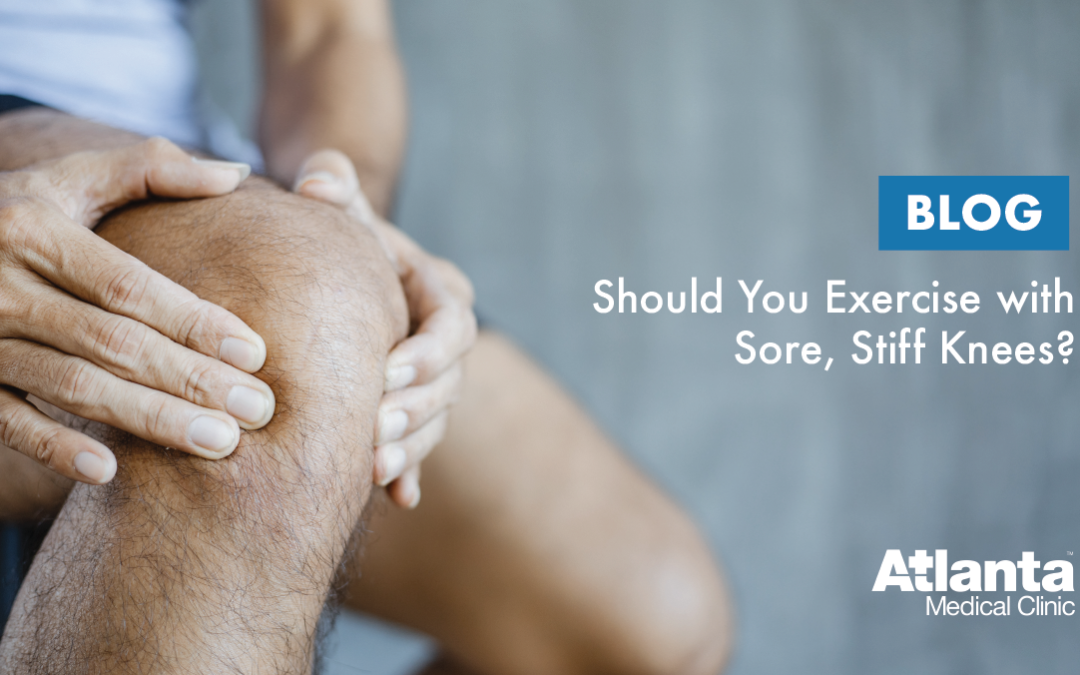You get out of bed, and your knees start to creak and pop. Or it’s time to head to the gym or out for your daily walk, but your knees are so sore, you wonder if exercising is the smart thing to do right now. The answer: It depends on the type of pain you’re feeling. Take a look at some tips for exercises that can strengthen your knee as well as some of the knee pain symptoms that are warning signs telling you to rest.
Avoid High Impact Exercise
If you have to jump, you probably should avoid that type of exercise. The same goes for sudden twists, starts and stops. That means basketball, soccer, football and most racket sports (think tennis, racquetball and squash) are off the table for you. Instead, look for low impact alternatives such as walking, swimming, cycling, or using an elliptical machine to keep stress on your knee joint to a minimum.
Stop Exercising If Your Pain Is Increasing
Not all pain is the same. The soreness of a muscle that hasn’t been stretched in a while is different from the grinding pain of bone-on-bone contact. Only you can measure your own pain — and it’s important that you do so.
Exercising has been shown to alleviate joint pain in many cases, including for those with arthritis. But if your pain is getting worse, heed the signs, rest your knee and contact your doctor to talk about knee pain treatment.
Here’s how to measure your exercise-related pain. If you feel minor discomfort or a tolerable level of low pain before you exercise, pay attention to it — and check in to see how you feel the day after exercising. If your pain level has gone up significantly and if it remains high the next morning, you’ve overdone it and need to rest and seek treatment.
Begin With Heat, End With Ice
There’s a reason that smart exercise programs ask you to warm up before you really get going: cold muscles are more prone to injury. You can warm up through stretching or slow walking — but you can also protect your sore knees by warming them literally by taking a hot shower, treating them with hot packs or wrapping them in warm towels.
After you exercise, you can stave off potential pain and reduce joint swelling by applying ice or cold packs to your knee. Aim for 20 minutes for both the heat and ice to help maintain your exercise program safely.
Consider Non-Surgical Knee Pain Treatments
Chronic knee pain doesn’t always have to lead to surgical treatment such as a full knee replacement. Whether your knee pain is caused or exacerbated by anything from injuries or bone spurs to arthritis, obesity or the wear and tear that comes with age, at Atlanta Medical Clinic, we take a full-body approach that considers all the factors behind your knee pain and seeks the most appropriate non-surgical knee pain treatments.
We offer painless hyaluronic acid injections that provide the lubrication that joints need to feel pain-free — lubrication that diminishes naturally with age and use. We’re also ready to offer chiropractic treatment, physical therapy and other alternative therapies to help your sore knee retain and recover its function. Contact us today to see how we can help.

